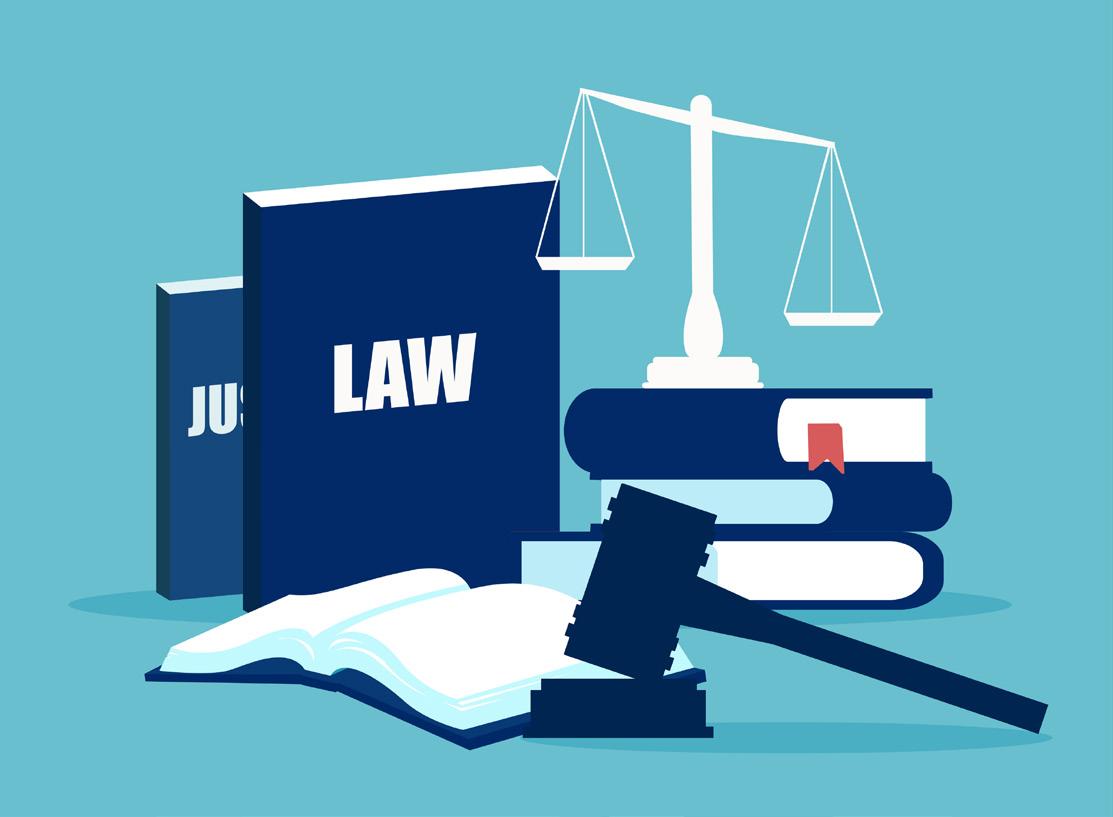
2 minute read
Fourth Amendment and Privacy
PUBLISHED BY
LAW WISE
Advertisement
Coordinators:
SEPTEMBER 2021 • ISSUE 1
Bethany J. Roberts, Chair, LRE Committee; Lisa Leroux-Smith, Public Services Director; Nicolas Toledo Shump, Law Wise Editor; & Abbey Gilliland-King, Layout & Graphics
Greetings from the Kansas Bar Association (KBA)! Welcome to the first edition of Law Wise for the 2021-2022 school year.
IN THIS ISSUE
Fourth Amendment and Privacy................................1
Fourth Amendment in the Schools ..........................3
Privacy in the Digital Age ........................................ 5
Exclusionary Rule..............................................7
Lesson Plans........................................................... 8
Terrific Technology for Teachers............................10
Editor Bio & Contact Info..................................... 11
The Fourth Amendment and Privacy Overview

Date Event
Sept 6 Labor Day Sept 11 Patriot Day Sept 15 Yom Kippur Sept 17 Constitution Day
Congress passed the Fourth Amendment in 1789, and it became law in 1791. As one of the Bill of Rights, the protection guaranteed by this Amendment remains central to our freedom against government action.
“The right of the people to be secure in their persons, houses, papers, and effects, against unreasonable searches and seizures, shall not be violated, and no Warrants shall issue, but upon probable cause, supported by Oath or affirmation, and particularly describing the place to be searched, and the persons or things to be seized.” There are several phrases well-known to most Americans like “unreasonable searches and seizures” and “probable cause.” While law enforcement agencies hold considerable power and resources today, this was not true at the time the Fourth Amendment went into effect.
Concern over policies such as “general warrants” and “writs of assistance” within English common law led to the enshrinement of the protection against “unreasonable” searches at the hands of law enforcement. The
The Fourth Amendment and Privacy Overview (cont.)
English monarchy had used general warrants to take action against political enemies. In two decisions from the decade prior to the American Revolution, the English courts claimed these warrants violated English common law. Within the colonies, writs of assistance allowed British colonial authorities to search for goods which had not been taxed. These writs did not have any time restraints. Colonist James Otis challenged these writs in a Boston court, though unsuccessfully.
Traditionally, the protections guaranteed by the Fourth Amendment involved restraints on government when it detained or searched individuals. Another important element of this Amendment is the requirement that there be probable cause to obtain a warrant. There are exceptions for searches of cars, street searches, and in emergency situations, too. As the interpretation of this Amendment developed, the Supreme Court developed the “exclusionary rule.” If the police find evidence during an illegal search, that evidence must be excluded regardless of the guilt of the potential criminal.
Though the U.S. Constitution has proved remarkably durable, the founders could not have anticipated the changes in technology that today make it difficult to not only define what a “search” is, but also what the boundaries of one’s “house” or “property” are. This issue of Law Wise will consider some of these questions as the ubiquity of digital technology and social media complicate our current understanding of privacy.









